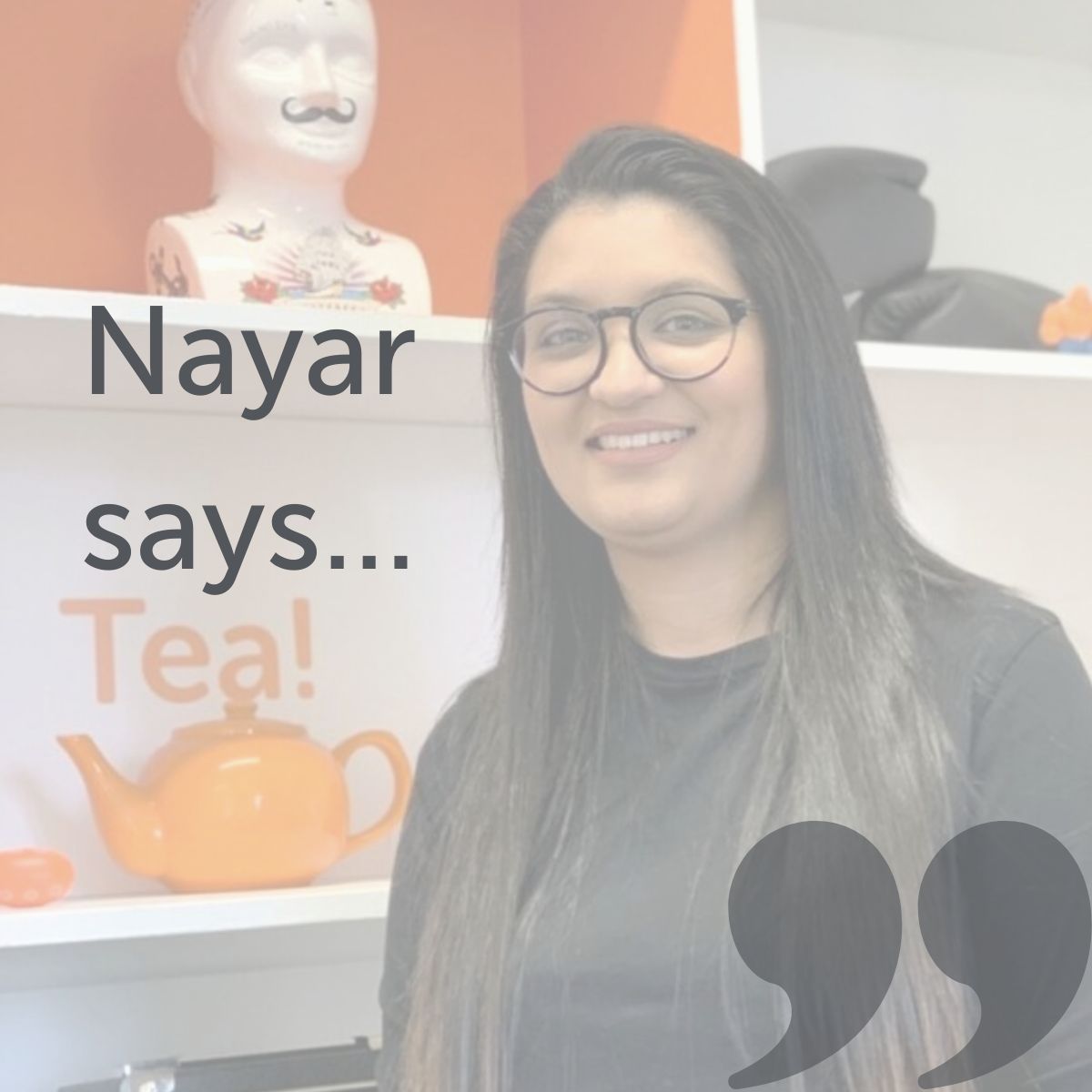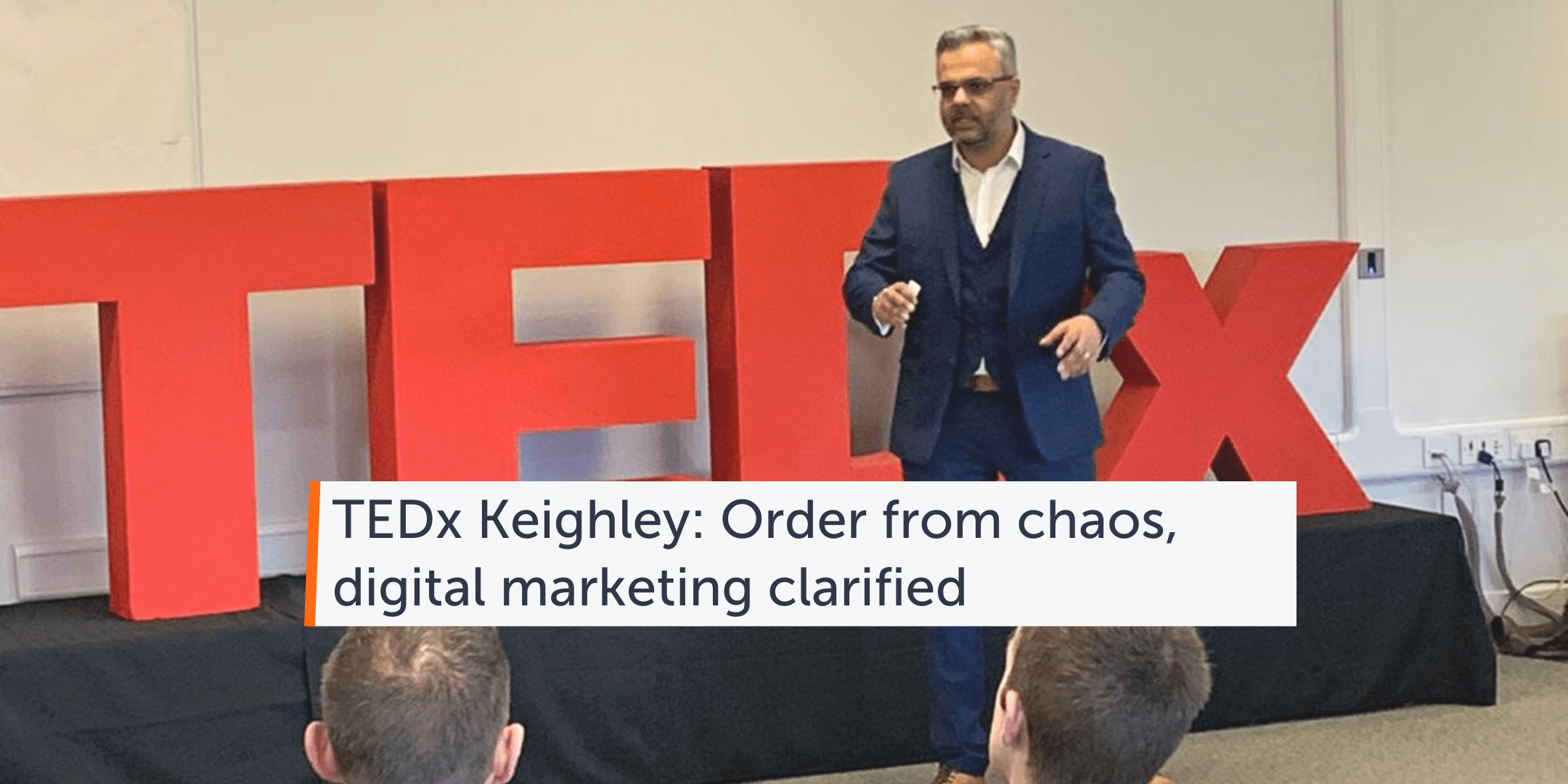In April 2007, I’d just been made redundant from a marketing manager position. With my last £500 of savings (I’d just taken on a mortgage for my first home and was due to get married within a few months), I set up Xpand.
Boy, oh boy, was I in for a roller coaster of a ride!
I knew being in business was going to have its challenges – if only I knew then, what I know now. But that’s the benefit of experience, right?
15 years on and I think it’s fair to say my team and I have learnt a fair bit.
When I look back over the years, the one thing that always stands out to me is how over complicated things become when they really don’t need to be. It’s all about keeping it simple.
As with anything, it’s easy to overthink and complicate your marketing. There are always new things to learn, new tools to use or new changes to adjust to. So, in keeping with our 15 years in business, here are 15 things you can do to simplify your marketing.
1) Always keep tabs on where you’ve been, where you are now and where you want to go

When you set up in business, you have this vision in your mind that you’re going to grow this beautiful little entity into a world dominating force to be reckoned with and reap the benefits of your labour.
But as we know, the road is NEVER straight forward.
You want things to be perfect, but there’s always an external force that means you have to change the way you’re doing things. These external forces might come from your competition, the state of the economy or struggling to find the right staff or suppliers.
There are so many things that you have to manage on a day to day basis as a business owner, that sometimes it all becomes a bit overwhelming and you forget the direction you’re going in.
Quite simply, you become bogged down with working IN your business rather than ON your business.
How to keep it simple:
- Write down the things you’ve done well in the past as a business. These are your successes. It’s important to celebrate these and remind yourself that, no matter how hard things get, you still have the ability to succeed.
- Write down a description of the 3 types of people you want to target your product/ service at.
- Write down at least 3 key competitors you want to benchmark yourself against.
- Write down what you want to achieve in the next 6, 12, 24 and 36 months.
Once you’ve got this written down, you’ve got the start of not only a marketing plan, but a business plan. If you write it down and regularly review it, it’s much more likely to happen.
Ok Mr Smarty Pants – did I just hear you say that there’s so much more than the above to business planning? You’re right. But let’s keep it simple for now (remember, that’s the point of this blog!). Get the above written down, and you’ve got yourself a foundation to move forward in the right direction.
2) Look at your resources and align them with your goals
I usually find there are three types of reaction to the word ‘strategy’
- Eyes glazing over followed by a yawn
- “Yeh but what do I get out of doing this right now, I don’t have the time!”
- “Yes! A strategy is exactly what I need to get my business to the next stage”
In case you were wondering, you need to be the latter. If you’re not, you’re missing a pretty major trick.
So, how do you create a simple strategy? The answer is to take a look at your resources (money, people and time are the biggest three to focus on) and see what you have available to get to where you want to go.
Look at the goals you’ve set for the coming 6 to 12 months and write down what you need to do to achieve them with the resources you have available. Start with breaking these actions down into what you will do in the next 90 days.
It’s as simple as that.
You’ll inevitably find that external circumstances will cause you to have to change direction from time to time. Some things you just can’t control, but if you’re regularly reviewing what’s happening in your business, this shouldn’t be a problem.
Need a bit of guidance? Download our free strategy template to help get you started.
3) Less is more when it comes to your brand
Your brand is more than just your logo. Your Brand dictates how people perceive your business and is the message you communicate to your target audience through your brand assets such as your logo, tone of voice, brand guidelines, imagery, graphics, as well as your content.
So, how do you keep your brand simple?
- Your brand marque (or your logo) – less is more. Get away from any fancy drop shadows or emboss effects. The more there is to look at, the less likely it is to imprint in your audience’s mind.
- Think of three core messages you want to communicate to your audience. Any of your communications should be able to relate back to these three core messages.
- Don’t try to be all things to all people – know who you are aiming your brand at, and for the love of God, don’t assume that just because you like something, your audience will. Make it all about your audience. They’re the hero in this story!
4) Start with your user in mind on your website
As with your brand, when it comes to your website, less is more. There are three types of content consumers:
- Skimmers – people who are short on time or not detail oriented
- Swimmers – people who read in a bit more detail, but not everything
- Divers – these people deep dive into everything, so require more detail
You need to make sure your website caters for all three types of users. How?
Simple, split your content layout into digestible sections. This can be done through your font weight.
Make titles and headlines meaningful and large with an outline of what the copy that follows it will say – Ideal for Skimmers.
Make the first paragraph slightly smaller with a bit more detail and an overview of what the section is going to talk about – Ideal for Swimmers.
Put the rest of the detail in the main body copy – Ideal for Divers.
5) Bring in specialists to fill in your knowledge gaps
As a business owner, you can fall into the trap of trying to do everything yourself. I get it, you feel that you know your business inside out and no one else will understand it better than you do.
It can be hard to let go, but you need to know when the right time is to get a specialist in.
Search Engine Optimisation (SEO) is all about getting your website to appear on Google for terms associated with your service/ product – it can become a very technical process. It often involves a high volume of very small changes that make the impact
Pay Per Click (PPC) advertising is part of the paid ads channel of marketing that gets your website shown in the first few listings on Google. It does what it says on the tin – you pay every time someone clicks on your link based on a bidding system.
Both SEO and PPC require skill and experience, so it’s best to leave it to the experts who live and breathe this stuff, so you can get on with your business.
Now, everyone wants their website to appear at the top of Google. EVERYONE. But, as it’s so misunderstood, there are a lot of cowboys out there that will take money for doing pretty much nothing.
How to keep it simple:
As mentioned before, unless you have the time and knowledge to do it yourself, my advice would be to outsource this. Find an agency or specialist with a proven track record of gaining return on investment and engage with them. It’s likely to have a cost associated with it, but if you get the right people on the job, it’ll become an investment rather than a cost.
Your responsibility here is to make sure you understand the basics of what they’re doing.
We’ve created glossary of terms to ensure you know what your chosen supplier is talking about:
BUT FIRST, ask yourself – is SEO or PPC the best way forward for my business based on the resources I have a available?
6) Check how your social media activity is performing by looking at your analytics
Social media has become a game changer for many businesses. You can now instantly connect with your target audience and potential customers through their preferred social media platforms.
And best of all, it’s completely free!
If you’re not using some form of social media strategy for your business, then you’re missing out.But not all social platforms are created equally.
You need to start by identifying which platform is the best for your business. You can do this by identifying your target audience and working out where they stand out most.
For example if your product targets BtoB founders, they’re most likely to be on LinkedIn. If your product targets mums, they might be on YouTube or Instagram.
Work out your platform and start creating content on the relevant one. THEN use your analytics to measure whether that platform is getting you the desired results.
You can do this by looking at the analytics features provided by the platforms themselves, or if you have Google analytics installed on your website, you can check there.
7) Think about the journalist and your audience, NOT your sales message

Often business owners confuse PR for sales.
When putting together an effective PR strategy, it’s important to keep in mind that the journalist isn’t interested in your product or service.
You need to think about what the journalist is looking for as well as what their audience is wanting to read, rather than trying to sell your product or service.
Articles and press releases purely focussed on your brand and product will most likely get rejected, spoiling your relationship with the journalist or publication, so be mindful of what you submit.
Tailor each press release to match what the journalist is looking for and that it’s also valuable to their audience. This will be looked at more favourably and is more likely to be accepted and published
When you show consideration for the journalist, you’re more likely to develop a long term relationship.
8) Less is more when it comes to advertising
Over the years I’ve worked with businesses in the manufacturing and construction sectors, amongst many others. One of the painful things I see these ‘traditional’ sectors make is over complicating their print advertising.
Trust me, I’ve seen it all from mish mash graphics, to multiple confusing messages in one advert.
A rule of thumb I would recommend is that less is more when it comes to advertising.
Try to stick to 1 key message on your print advert or leaflet. Also make sure any graphics you use complement the message and don’t clutter the design. It’s important to leave some white space between text, logos and graphics.
Keeping these things in mind will allow you to not only attract your target audience but also allows you to put across an impactful message.
9) Only capture relevant data that aligns with your goals
Email marketing is a brilliant way to connect with your target audience and nurture a long term relationship with them.
However many businesses get this wrong.
It’s important when capturing your prospect’s data, that you take the relevant information that aligns with your goals.
For example if your goal is to have your sales team speak to a prospect or lead and convert them, you need to make sure you also capture their phone number.
Alternatively, if you know that you won’t be posting out letters, don’t ask them for their address.
Asking for irrelevant data can increase friction and may result in them NOT giving you any information at all.
10) Create a simple dashboard to review and measure your key metrics
Reviewing and measuring your activity is a must as a business owner, otherwise you won’t know what sales and marketing activity is giving you the best bang for your buck!
But often we over complicate things, which quickly results in overwhelm.
The easiest thing you can do is to create a simple dashboard which outlines your key metrics such as:
- Number of leads
- Lead source
- Your conversion rate
- Turnover
- Profit
This can help you immediately see which of your marketing activities is giving you the best results. It can allow you to see where you may want to put in more of your financial and time investment, and where you might want to hold back.
11) ROI should be measured regularly to make sure your marketing efforts are getting you results
When it comes to Return on investment (ROI), we generally find two camps.
Business owners that are interested only in the hard metrics or ‘numbers’, and business owners who are open to understanding the deeper impact their business has, resulting in an emotional ROI.
I’ve found it’s usually best to have a mix of both.
We need to remember that we are marketing to real people, not data.
In fact, emotional ROI is so important that a MaritzCX study revealed that 80% of companies that focus on the emotional impact they have on their customers have better financial performance year over year.
Read more about what I learnt about emotional impact with Xpand’s clients here.
However if you are interested in the raw metrics then you can calculate ROI figures using the following formula:
ROI= (net income) / (cost of investment) x 100
This can be used for any investment and results you achieve for marketing, sales or any other activity you would like to calculate ROI for in your business.
As part of our #simply15 campaign, we asked our team, what one thing they felt could help business owners simplify their marketing, here’s what they had to say:
12) Simon – block out time to focus on marketing

You’d be surprised how many businesses don’t put any focused effort into their marketing, and only dabble as and when they can.
Inconsistent effort will result in inconsistent results.
Block out time in your calendar to focus on your marketing efforts. You don’t need to be on every channel, just be consistent on those that will provide the biggest impact for your business.
If you don’t plan it in, you won’t get it done. A great example of this is when businesses start doing SEO. They start and stop continuously, which gets them nowhere.
Avoid doing SEO just once and then stopping. It’s an ongoing activity that should be planned to be done regularly, once you stop, it can be twice as hard to start again.
Another example is PPC – make sure your budget makes PPC a viable channel for you. Too small a budget could be a waste of time as it won’t lead to your desired results in a timely manner.
Simon Patchett, Operations Manager
13) Danni – talk to your audience

I frequently speak to business owners that have no idea who their target audience are
Understanding your audience should be an essential part of your marketing strategy. How can you know what you need to communicate, and what marketing messages will resonate with your audience when you have no clue who they are?
My recommendation is to create audience personas for your business. This exercise alone can give you deeper insight into who your potential customers are, where they hang out, what their likes and dislikes are and how your business/widget can help them.
The key is to get to know your customers in depth and talk to them in every communication you put out, whether that’s via print, social media or your website.
Danni Johnson, Marketing Manager
14) Nayar – consistency is the key

With new social media algorithms and Google updates being released frequently, it can become difficult to stay up to date with them all. For a busy business owner it can almost become another job to keep up with everything.
But like anything in life, instead of focusing on the hacks and shortcuts, it’s best to focus on the system. Generally when it comes to anything, consistency is the key.
Instead of trying to stay up to date with everything and over complicating things, simply focus on outlining one thing that will give the highest leverage to your marketing, create a strategy and then remain consistent with that until you get some data to show you what you need to change.
So, for example if you’re looking to post more content on social media, pick one platform, identify the number of times you can post valuable content without it becoming difficult, and post there consistently.
If you’re using a specific marketing channel to get more people to your website, such as PPC or PR, pick just one channel, outline your strategy with that channel and stick to it until you see results.
Nayar Pervez, Digital Marketing Executive
15) Jag – let it go, trust your employees to do their job

As a business owner, it can get difficult to let go. Instead of micromanaging your employees, let them do what they do best
After all, that’s why you hired them, right? If they weren’t good at what they did, you wouldn’t have hired them in the first place, so trust them to deliver the results.
I used to try to do everything myself and make sure I knew every detail of everything that happened. But as the business grew, I realised this wasn’t physically possible because I was creating bottlenecks in jobs being signed off.
Jag Panesar, Director
So, folks, there they are, 15 ways to keep things simple in your business that my team and I have learnt over the last 15 years.
The first 11 points in this blog focus around the SOLAR7 framework. If you’re interested in learning more about this, get in touch!


